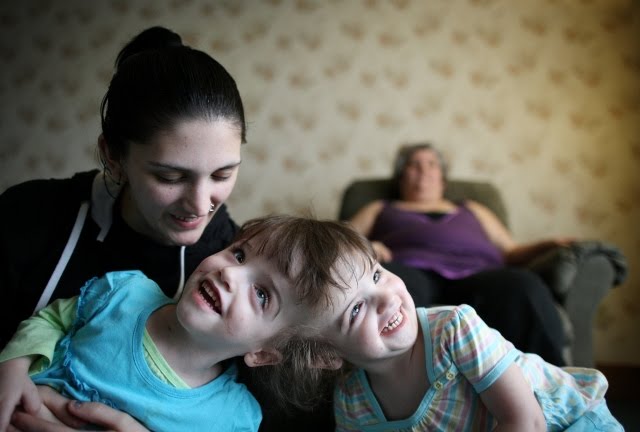Conjoined twins, often referred to as CT in medical literature, are a rare phenomenon that has fascinated humanity for centuries. These twins are physically connected at birth, sharing parts of their bodies or internal organs. While the occurrence is uncommon, it presents unique challenges and opportunities for understanding human development, genetics, and medical care. This article delves into the intricacies of this condition, exploring its causes, the complexities involved, and the various care options available.

What Are Conjoined Twins?
Conjoined twins are identical twins who are born physically joined together. They originate from a single fertilized egg that splits partially during early development. Unlike fraternal twins, who result from two separate eggs fertilized by two different sperm, conjoined twins share the same genetic makeup. The degree of connection can vary significantly, ranging from shared skin and tissues to more complex cases involving shared vital organs like the heart, liver, or brain.
Types of Conjoined Twins
Depending on the point of connection, conjoined twins are classified into several categories:
- Thoracopagus: Joined at the chest, often sharing a heart or other thoracic organs.
- Omphalopagus: Connected at the abdomen, typically sharing the liver or intestines.
- Pygopagus: Joined at the lower back or buttocks, often sharing parts of the digestive or urinary systems.
- Ischiopagus: Fused at the pelvis, with some cases involving shared limbs.
- Craniopagus: Connected at the head, which may involve shared brain tissue or blood vessels.
The type of connection influences the medical challenges faced by the twins and the potential for surgical separation.
Causes of Conjoined Twins
The exact cause of conjoined twins remains unclear, but researchers believe it results from an incomplete splitting of the fertilized egg. Normally, identical twins form when a single fertilized egg divides into two embryos within the first few days after conception. In the case of conjoined twins, this division process is disrupted, leading to partial separation.
Possible Factors Influencing Development
While no definitive cause has been identified, several factors might contribute to the formation of conjoined twins:
- Genetic Factors: Although conjoined twinning does not appear to run in families, certain genetic predispositions might influence the likelihood of incomplete splitting.
- Environmental Influences: Exposure to specific environmental factors during pregnancy could play a role, though research in this area is ongoing.
- Timing of Embryonic Division: If the fertilized egg begins to split later than usual—around 13 to 15 days after conception—it may not complete the process, resulting in conjoined twins.
Despite advances in medical science, much about the origins of this condition remains a mystery.
Challenges Faced by Conjoined Twins
Living as conjoined twins presents numerous physical, emotional, and social challenges. These challenges depend largely on the extent of the physical connection and the organs shared between the twins.
Physical Challenges
The physical challenges faced by conjoined twins vary widely based on their type of connection:
- Twins joined at the chest or abdomen may face complications related to shared vital organs, such as the heart or liver.
- Those connected at the pelvis might experience mobility issues due to shared limbs or spinal structures.
- Twins fused at the head often encounter neurological complications, as they may share brain tissue or blood flow systems.
These physical limitations can impact daily activities, independence, and overall quality of life.
Emotional and Psychological Challenges
Beyond the physical aspects, conjoined twins must navigate complex emotional and psychological landscapes. Issues such as identity, autonomy, and personal boundaries can be particularly challenging. For example:
- One twin may have different desires or goals than the other, creating tension in decision-making.
- Social interactions can be complicated, as others may struggle to understand or accept their unique situation.
- Mental health concerns, such as anxiety or depression, may arise due to societal stigma or feelings of isolation.
Support from family, friends, and mental health professionals is crucial in helping conjoined twins cope with these challenges.
Care Options for Conjoined Twins
The care and treatment of conjoined twins require a multidisciplinary approach, involving specialists from various fields such as surgery, pediatrics, and psychology. The primary goal is to ensure the best possible quality of life for both individuals.
Non-Surgical Care
In many cases, conjoined twins can live fulfilling lives without undergoing separation surgery. Non-surgical care focuses on managing their condition through:
- Medical Monitoring: Regular check-ups to assess the health of shared organs and address any complications.
- Physical Therapy: Exercises designed to improve mobility and strengthen muscles, especially for twins with limited movement.
- Assistive Devices: Wheelchairs, braces, or other tools to enhance independence and comfort.
This approach prioritizes the well-being of both twins while avoiding the risks associated with surgery.
Surgical Separation
Surgical separation is a highly complex procedure considered only when it offers a significant improvement in the quality of life for both twins. Key considerations include:
- Feasibility: Whether the twins share vital organs that cannot be safely divided.
- Risk Assessment: Evaluating the potential risks to one or both twins during and after surgery.
- Ethical Concerns: Balancing the benefits of separation against the possibility of sacrificing one twin’s life for the other’s survival.
Successful separations have been achieved in some cases, but they require meticulous planning and execution by a team of experts.
Famous Cases of Surgical Separation
Several high-profile cases of conjoined twin separation have captured global attention:
- Chang and Eng Bunker: Known as the original “Siamese twins,” they lived full lives without separation in the 19th century.
- Carl and Clarence Aguirre: Successfully separated in stages over several years, allowing both to lead independent lives.
- Jadon and Anias McDonald: Underwent a groundbreaking surgery to separate their shared brain tissue, marking a significant medical achievement.
These cases highlight the advancements in medical technology and the resilience of conjoined twins and their families.
Long-Term Support and Rehabilitation
Whether separated or not, conjoined twins often require long-term support to adapt to their circumstances. Rehabilitation programs focus on:
- Physical Recovery: Helping twins regain strength and mobility post-surgery or manage existing physical limitations.
- Psychological Counseling: Addressing emotional challenges and fostering a positive self-image.
- Educational and Vocational Training: Preparing twins for independent living or meaningful contributions to society.
This comprehensive approach ensures that conjoined twins receive holistic care tailored to their unique needs.
Advances in Research and Technology
Recent advancements in medical research and technology have improved our understanding of conjoined twins and enhanced care options. Innovations such as 3D imaging, robotic-assisted surgery, and regenerative medicine hold promise for better outcomes in the future.
Role of Imaging Technologies
Imaging technologies like MRI and CT scans allow doctors to visualize the internal anatomy of conjoined twins in detail. This information is critical for planning surgeries and assessing the feasibility of separation.
Emerging Surgical Techniques
Robotic-assisted surgery and minimally invasive procedures reduce recovery times and improve precision during operations. Additionally, tissue engineering and organ transplantation research offer new possibilities for addressing shared organ complications.
Genetic Studies
Ongoing genetic studies aim to uncover the underlying mechanisms behind conjoined twinning. By identifying specific genes or mutations involved, researchers hope to develop preventive measures or early interventions.
Societal Perception and Advocacy
Conjoined twins have historically been viewed through a lens of curiosity or even exploitation. However, modern advocacy efforts seek to shift this narrative toward acceptance and inclusion.
Changing Public Perception
Documentaries, interviews, and media portrayals have helped raise awareness about the realities of living as conjoined twins. These efforts emphasize their humanity, talents, and contributions to society.
Advocacy Groups
Organizations dedicated to supporting conjoined twins and their families provide resources, education, and community-building opportunities. These groups advocate for equal rights, accessibility, and representation in all areas of life.
Legal and Ethical Considerations
The legal and ethical dimensions of caring for conjoined twins are complex. Questions about consent, autonomy, and the rights of each individual must be carefully navigated to ensure fair and compassionate treatment.





